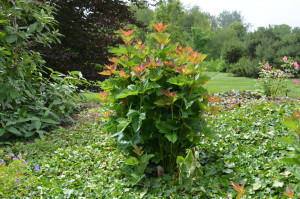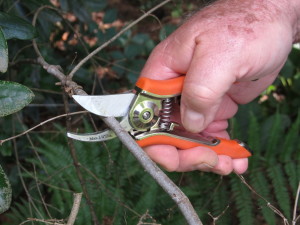Gardeners are frequently scared about making pruning mistakes. There are lots of gardening books filled with lots of before and after photos. Let’s face facts…your yard tree or shrub does look like the ones pictured in the pruning book.
Here are my simple 5 steps for pruning:
- Why and When to prune: You can prune a tree or shrub any day of the year. The best time is generally in late winter. Choose a comfortable weather day to work outdoors so you’re not in a hurry. Remove low growing branches in any month. Branches that are dead, broken, infested with scale insects, or diseased can also be sawed or lopped off anytime. If the job involves major pruning, e.g. 30% of branches removed, spring or summer pruning is best time.
- Flowering shrubs or trees — when do they bloom? Spring flowering shrubs and trees are best pruned immediately after or within one month after flowering. Can’t wait?…then prune when you’re ready. Crabapples, ornamental cherries, redbuds, dogwoods, azaleas, lilacs, forsythias, and spireas bloom on old wood in spring. Summer flowering woody plants bloom on new wood. Examples include most (not all) hydrangeas, chaste trees (Vitex), crape myrtles, althea (Hibiscus), butterfly bush (Buddleia), and roses.
- Make the big cuts first. Take your time! Observe the tree from several points to determine the best cuts. Making many small cuts is okay, but they’re a lot more time consuming. Small pruning cuts heal faster than bigger ones. Completely rejuvenated shrubs are cut back 6 – 12 inches above the ground. Applying pruning wound paint is not necessary.
- Use sharp pruning tools — Don’t plan to do all work in 1 year. If the tree has been neglected for several years, it may take 3-4 years to bring back desired shape and health. To repeat, don’t remove more 30% of branches in any one year.
- Large shade trees — hire a certified arborist who should be properly insured and licensed. Maples, oaks, lindens, elms, birches, and others should be pruned every 5 years. Tree topping should be avoided as this practice results in a tree potentially more hazardous.



 Posted in
Posted in 
